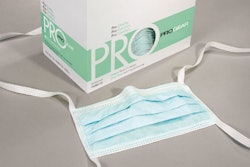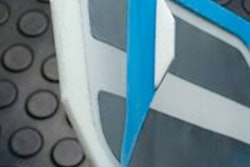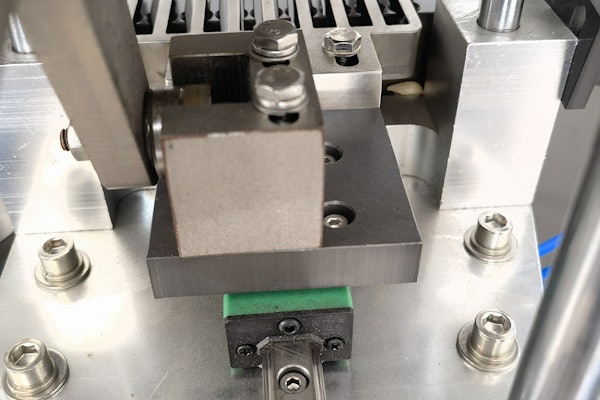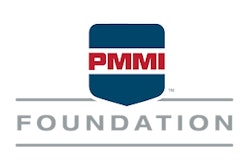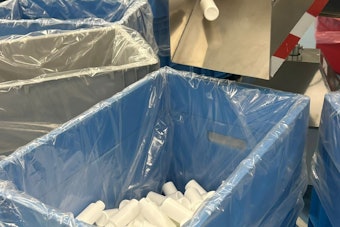The modern-day packaging engineer must consider the hazards of electrostatic discharge (ESD) for the protection of microprocessor-driven medical devices such as a pacemaker circuit card. An ESD event could render an unprotected pacemaker circuit card nonoperational. If a pacemaker circuit card is picked up with stainless-steel tweezers from an insulative tray, metal-to-metal contact between the tweezers and charged circuit card could result in an ESD event.
The medical device and pharmaceutical delivery industries are adopting advanced-level ESD-protective measures for manufacturing compliance. ESD shielding packaging must also be considered for protection during transport outside the manufacturing area as well as inside the hospital environment. Following the aerospace/defense and semiconductor disk-drive sectors, medical device pacemaker OEMs were one of the first to adopt ESD control measures for implementation inside the electrostatic protected area (EPA). Unlike PC manufacturers who simply issue RMAs (Return Merchandise Authorization) for exchange, space agencies, defense contractors, and medical device professionals must provide protective measures to safeguard ESD-sensitive components both inside and outside the EPA.
According to JPL/NASA (Jet Propulsion Laboratory/National Aeronautics and Space Administration), ESD-related issues are estimated at $40 billion annually.1 ESD problems occur with capacitive sensors, RFID devices, retail terminals, hospital monitoring equipment, and other microprocessor-driven devices. Even though an ESD protective area may be rated for compliance under a +/-100 volt threshold, a carpeted floor can generate over 35,000 volts at 20% low humidity.2
One must practice due diligence to supplement the U.S. Food and Drug Administration's alleged lack of regular, mandated inspections of medical device manufacturers. U.S. lawmakers asserted that the FDA has insufficient funding and power to maintain appropriate oversight and regulation of imported products.3
Packaging requirements
Medical device packaging engineers need to design packaging that will protect medical devices from triboelectrification (charge generation by friction) while ensuring attenuation (shielding) from high-voltage discharges. Semiconductor and disk-drive manufacturers define ESD packaging requirements for contract manufacturers (CMs) to ensure validation by annual on-site assessments. Consequently, ESD certification training combined with third-party supplier packaging testing is standard procedure before products are placed on a materials qualification list (MQL). Sixty percent of the author's ESD testing of domestic and offshore packaging, especially polymers, falls short in meeting minimal requirements set forth in ANSI, EIA, IEC, ASTM, Military Standards, and JEDEC requirements. Current ESD protection protocols for the semiconductor disk-drive sectors are being adopted by medical device OEMs to supplement ASTM Flexible Barrier Packaging and ISO 134585 validation requirements. Sound ESD medical device packaging should be a required component for an overall risk assessment program that includes material qualification, supplier quality, package design, equipment and systems, and process design and control categories.4
Space agency, disk-drive, and medical device environmental requirements for cleanliness (sterility) or chemical compatibility are similar. ISO Class 3 to 5 clean rooms require ESD/ESA5-compliant materials that are noncontaminating and free of antistatic amines. For compliant vacuum-formed trays, ESD properties should not be diminished when subjected to IPA (isopropyl alcohol) rinsing and deionized water bathing. However, many topical antistats have difficulty in maintaining favorable properties after rinsing and can pose problems with electronic part damage by antistat vapor.6 Figure 2 illustrates droplets and damaged areas (white) on stored devices for a 26-micrometer-wide substrate.
Packaging misconception
A common misconception held by many packaging engineers is that antistatic packaging will provide shielding protection from high-voltage discharges. Moreover, resistance, electrostatic decay, and charge-retention tests for humidity-dependent antistatic vacuum-formed trays have resulted in findings that do not meet minimal requirements as set forth in ANSI/ESD S541-2008 and other ESD packaging-related standards. To compound this problem, some end users believe that topical antistat vacuum-formed trays can be effectively utilized for long-term storage or reuse for years. The objective of accelerated aging testing is to validate a material's ability to maintain ESD properties over time. For example, MIL-PRF-81705 aging tests equate one day at 160ºF to 17 days at room temperature.7
Surface resistance data from Dr. Marv Havens' “The Chemistry of Dissipative Plastics” established that topical antistats can become insulative on the fourteenth day. This calculates to a life expectancy or shelf life of about 238 days (approximately seven months).8 Other more severe test methods cut this figure down to a 90-day life expectancy for surface resistance values to remain below the upper cutoff limit of 1.0 x 1011 ohms per ANSI/ESD S541 (preconditioned for 48 to 72 hours at 12% +/-3% RH, 73ºF +/-5ºF). Dr. John Kolyer (Boeing, retired) in his book, “ESD from A to Z,” discusses the issues that antistats pose by facilitating tribocharging at less than 10% RH.
Shipping considerations
During air shipment9 and land transport, relative humidity (RH) can drop to less than 10%. Low RH combined with elevated temperature inside shipping vehicles can rapidly diminish the ESD effectiveness of antistatic trays. In Dr. Masamitsu Honda's (Impulse Physics Laboratory, Inc., Japan) paper, it was observed that a flight attendant was charged to +2.5kV by walking about 3m on the carpet aisle in the rear fuselage galley area. The attendant stated that she sometimes felt static electricity when touching metal objects. It has been well established that one feels a discharge by simply touching a doorknob between 2500 to 3500 volts. A medical device package should exhibit the following ESD properties:10
• Low charging
• Surface- or volume-resistance characteristics (conductive and dissipative)
• Shielding (electrostatic discharge-
resistance and electric-field attenuation)
Some ESD test methods for medical device circuit card packaging consist of the following:
• Surface or volume resistance
• Electrostatic decay
• Charge retention (Faraday Cup or contact voltage)
• High-voltage discharge resistance (HVD) test
A noncompliant medical device tray when subjected to a battery of required ESD testing protocols (PET-G vacuum-formed tray treated with a topical antistat) may produce unfavorable two-point resistance readings as illustrated in Figure 1.
An antistatic tray is housed by a Type I aluminum barrier bag (Figure 3) to ensure protection from moisture build-up while providing a shielding mechanism against electrostatic discharges. The bag was subjected to a HVD test per ANSI/ESD STM11.31-2006. A 1kV discharge was made on to the bag to determine if less than 50 nJ of energy would pass through the shielding structure.
In conclusion, for a medical device package requiring long-term storage, special considerations for the type of ESD protective polymers should be specified for humidity independence, IPA rinsing integrity, and nonmigration potential. The packaging engineer needs to validate the shielding effectiveness, resistance, charge decay, and retention characteristics beyond a vendor's specification sheet in order to ensure protection of ESD-sensitive medical devices.
- By Robert J. Vermillion
Robert J. Vermillion, CPP/Fellow, is a Certified ESD & Product Safety Engineer-iNARTE and ESDA Standards member. He is the founder and chair of the Medical Device Committee ESD Task Group with the Institute of Packaging Professionals (www.iopp.org). He conducts ESD seminars in the U.S. and abroad. Vermillion is the founder/president of RMV Technology Group, LLC, a third-party ESD Materials Testing and Consulting company. He can be reached at 925/673-0225 or [email protected].
References
1. http://ga.jpl.nasa.gov/EAAT 02/ESD 02/JPL Publication
2. Mil-Handbook-263
3. NewsInferno.com, May 15, 2008, 2008 GAL FDA Plant Inspections per year (www.newsinferno.com/archives/4063)
4. Hal Miller, Pace Solutions, LLC HealthPack on 4 - 6 March 2008
5. Electrostatic Attraction
6. J.M. Koyler, Ph.D., A.A. Passchier, Ph.D. and E.G. Peterson, The Boeing Company, ESDA Symposium 2001
7. EOS/ESE Symposium in 1989 by Dr. Marv Havens
8. EOS/ESD Symposium in 1989 by Dr. Marv Havens
9. ESD Events in Aircraft Cabin Environment, Masamitsu Honda, Impulse Physics Laboratory, Inc.
10. ANSI/ESD S541
The medical device and pharmaceutical delivery industries are adopting advanced-level ESD-protective measures for manufacturing compliance. ESD shielding packaging must also be considered for protection during transport outside the manufacturing area as well as inside the hospital environment. Following the aerospace/defense and semiconductor disk-drive sectors, medical device pacemaker OEMs were one of the first to adopt ESD control measures for implementation inside the electrostatic protected area (EPA). Unlike PC manufacturers who simply issue RMAs (Return Merchandise Authorization) for exchange, space agencies, defense contractors, and medical device professionals must provide protective measures to safeguard ESD-sensitive components both inside and outside the EPA.
According to JPL/NASA (Jet Propulsion Laboratory/National Aeronautics and Space Administration), ESD-related issues are estimated at $40 billion annually.1 ESD problems occur with capacitive sensors, RFID devices, retail terminals, hospital monitoring equipment, and other microprocessor-driven devices. Even though an ESD protective area may be rated for compliance under a +/-100 volt threshold, a carpeted floor can generate over 35,000 volts at 20% low humidity.2
One must practice due diligence to supplement the U.S. Food and Drug Administration's alleged lack of regular, mandated inspections of medical device manufacturers. U.S. lawmakers asserted that the FDA has insufficient funding and power to maintain appropriate oversight and regulation of imported products.3
Packaging requirements
Medical device packaging engineers need to design packaging that will protect medical devices from triboelectrification (charge generation by friction) while ensuring attenuation (shielding) from high-voltage discharges. Semiconductor and disk-drive manufacturers define ESD packaging requirements for contract manufacturers (CMs) to ensure validation by annual on-site assessments. Consequently, ESD certification training combined with third-party supplier packaging testing is standard procedure before products are placed on a materials qualification list (MQL). Sixty percent of the author's ESD testing of domestic and offshore packaging, especially polymers, falls short in meeting minimal requirements set forth in ANSI, EIA, IEC, ASTM, Military Standards, and JEDEC requirements. Current ESD protection protocols for the semiconductor disk-drive sectors are being adopted by medical device OEMs to supplement ASTM Flexible Barrier Packaging and ISO 134585 validation requirements. Sound ESD medical device packaging should be a required component for an overall risk assessment program that includes material qualification, supplier quality, package design, equipment and systems, and process design and control categories.4
Space agency, disk-drive, and medical device environmental requirements for cleanliness (sterility) or chemical compatibility are similar. ISO Class 3 to 5 clean rooms require ESD/ESA5-compliant materials that are noncontaminating and free of antistatic amines. For compliant vacuum-formed trays, ESD properties should not be diminished when subjected to IPA (isopropyl alcohol) rinsing and deionized water bathing. However, many topical antistats have difficulty in maintaining favorable properties after rinsing and can pose problems with electronic part damage by antistat vapor.6 Figure 2 illustrates droplets and damaged areas (white) on stored devices for a 26-micrometer-wide substrate.
Packaging misconception
A common misconception held by many packaging engineers is that antistatic packaging will provide shielding protection from high-voltage discharges. Moreover, resistance, electrostatic decay, and charge-retention tests for humidity-dependent antistatic vacuum-formed trays have resulted in findings that do not meet minimal requirements as set forth in ANSI/ESD S541-2008 and other ESD packaging-related standards. To compound this problem, some end users believe that topical antistat vacuum-formed trays can be effectively utilized for long-term storage or reuse for years. The objective of accelerated aging testing is to validate a material's ability to maintain ESD properties over time. For example, MIL-PRF-81705 aging tests equate one day at 160ºF to 17 days at room temperature.7
Surface resistance data from Dr. Marv Havens' “The Chemistry of Dissipative Plastics” established that topical antistats can become insulative on the fourteenth day. This calculates to a life expectancy or shelf life of about 238 days (approximately seven months).8 Other more severe test methods cut this figure down to a 90-day life expectancy for surface resistance values to remain below the upper cutoff limit of 1.0 x 1011 ohms per ANSI/ESD S541 (preconditioned for 48 to 72 hours at 12% +/-3% RH, 73ºF +/-5ºF). Dr. John Kolyer (Boeing, retired) in his book, “ESD from A to Z,” discusses the issues that antistats pose by facilitating tribocharging at less than 10% RH.
Shipping considerations
During air shipment9 and land transport, relative humidity (RH) can drop to less than 10%. Low RH combined with elevated temperature inside shipping vehicles can rapidly diminish the ESD effectiveness of antistatic trays. In Dr. Masamitsu Honda's (Impulse Physics Laboratory, Inc., Japan) paper, it was observed that a flight attendant was charged to +2.5kV by walking about 3m on the carpet aisle in the rear fuselage galley area. The attendant stated that she sometimes felt static electricity when touching metal objects. It has been well established that one feels a discharge by simply touching a doorknob between 2500 to 3500 volts. A medical device package should exhibit the following ESD properties:10
• Low charging
• Surface- or volume-resistance characteristics (conductive and dissipative)
• Shielding (electrostatic discharge-
resistance and electric-field attenuation)
Some ESD test methods for medical device circuit card packaging consist of the following:
• Surface or volume resistance
• Electrostatic decay
• Charge retention (Faraday Cup or contact voltage)
• High-voltage discharge resistance (HVD) test
A noncompliant medical device tray when subjected to a battery of required ESD testing protocols (PET-G vacuum-formed tray treated with a topical antistat) may produce unfavorable two-point resistance readings as illustrated in Figure 1.
An antistatic tray is housed by a Type I aluminum barrier bag (Figure 3) to ensure protection from moisture build-up while providing a shielding mechanism against electrostatic discharges. The bag was subjected to a HVD test per ANSI/ESD STM11.31-2006. A 1kV discharge was made on to the bag to determine if less than 50 nJ of energy would pass through the shielding structure.
In conclusion, for a medical device package requiring long-term storage, special considerations for the type of ESD protective polymers should be specified for humidity independence, IPA rinsing integrity, and nonmigration potential. The packaging engineer needs to validate the shielding effectiveness, resistance, charge decay, and retention characteristics beyond a vendor's specification sheet in order to ensure protection of ESD-sensitive medical devices.
- By Robert J. Vermillion
Robert J. Vermillion, CPP/Fellow, is a Certified ESD & Product Safety Engineer-iNARTE and ESDA Standards member. He is the founder and chair of the Medical Device Committee ESD Task Group with the Institute of Packaging Professionals (www.iopp.org). He conducts ESD seminars in the U.S. and abroad. Vermillion is the founder/president of RMV Technology Group, LLC, a third-party ESD Materials Testing and Consulting company. He can be reached at 925/673-0225 or [email protected].
References
1. http://ga.jpl.nasa.gov/EAAT 02/ESD 02/JPL Publication
2. Mil-Handbook-263
3. NewsInferno.com, May 15, 2008, 2008 GAL FDA Plant Inspections per year (www.newsinferno.com/archives/4063)
4. Hal Miller, Pace Solutions, LLC HealthPack on 4 - 6 March 2008
5. Electrostatic Attraction
6. J.M. Koyler, Ph.D., A.A. Passchier, Ph.D. and E.G. Peterson, The Boeing Company, ESDA Symposium 2001
7. EOS/ESE Symposium in 1989 by Dr. Marv Havens
8. EOS/ESD Symposium in 1989 by Dr. Marv Havens
9. ESD Events in Aircraft Cabin Environment, Masamitsu Honda, Impulse Physics Laboratory, Inc.
10. ANSI/ESD S541



